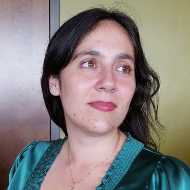
Do you ever think about where science denial comes from? I know I had various ideas about the sources of science denial when I started working for NCSE. Science denial, I thought, was in part a product of certain corporate and religious interests. And perhaps I also thought of science denial as a product of an educational problem. I have spent many years studying science education, trying to understand how and why a fairly large percentage of people are turned off by the discipline. I figured that if I could understand this, I could develop new ways to show them how beautiful and exciting I find science.
When I studied what factors contributed to students tuning out science, ultimately, the most important sources of information I had were students. Talking with them and listening to them gave me a whole new perspective that I could not have developed just by looking at the problem from the outside, by examining scholarly sources and societal forces. Perhaps it shouldn’t surprise me that the same sources transformed my understanding about the roots of science denial. My ideas about the source of this problem have changed fundamentally based on my interactions with regular, everyday people as they encounter information about climate change.
Now, this isn’t to say that I no longer believe larger societal forces, such as inadequate support of science teachers and willful misinformation campaigns funded by certain industries, make significant contributions to science denial. However, I do think that we gain a richer and more meaningful understanding of the problem if we synthesize understanding from this “top-down” with a “bottom-up” approach, in which we work to understand the emotional reactions of our fellow human beings.
In my earlier work, I was struck by the force of my students’ negative emotions towards science; specifically, how the language used in science classes caused them to feel alienated and disenfranchised, like outsiders looking in on a club that didn’t quite want them. I found that introducing some fairly simple changes to make the language in my science courses more inclusive increased both participation and positive feelings in my students. Of course, before I got to that point, I first had to deal with my response to their emotions. How could they hate the language of science that I love so much? Before I could improve my teaching to meet their needs, I had to accept their feelings as valid.
Scientists often have a hard time putting themselves in the shoes of non-scientists; we so often look at the world through a lens of logic. We tend to forget that this is not the default way of perceiving the world. This viewpoint also leaves us vulnerable to the misconception that people who don’t agree with us simply need more evidence to be convinced of the facts. Social science research tells us this is not true.
Recognizing that the language of science could be alienating was a really game-changing moment for me. Last week, I had a similar revelation after organizing a hands-on climate change exhibit that was attended by about 1,300 members of my community. Nice people! And frankly, a self-selecting population—they were, after all, voluntarily going to a science event on a Friday night. What did I encounter? Stand by for part 2.

